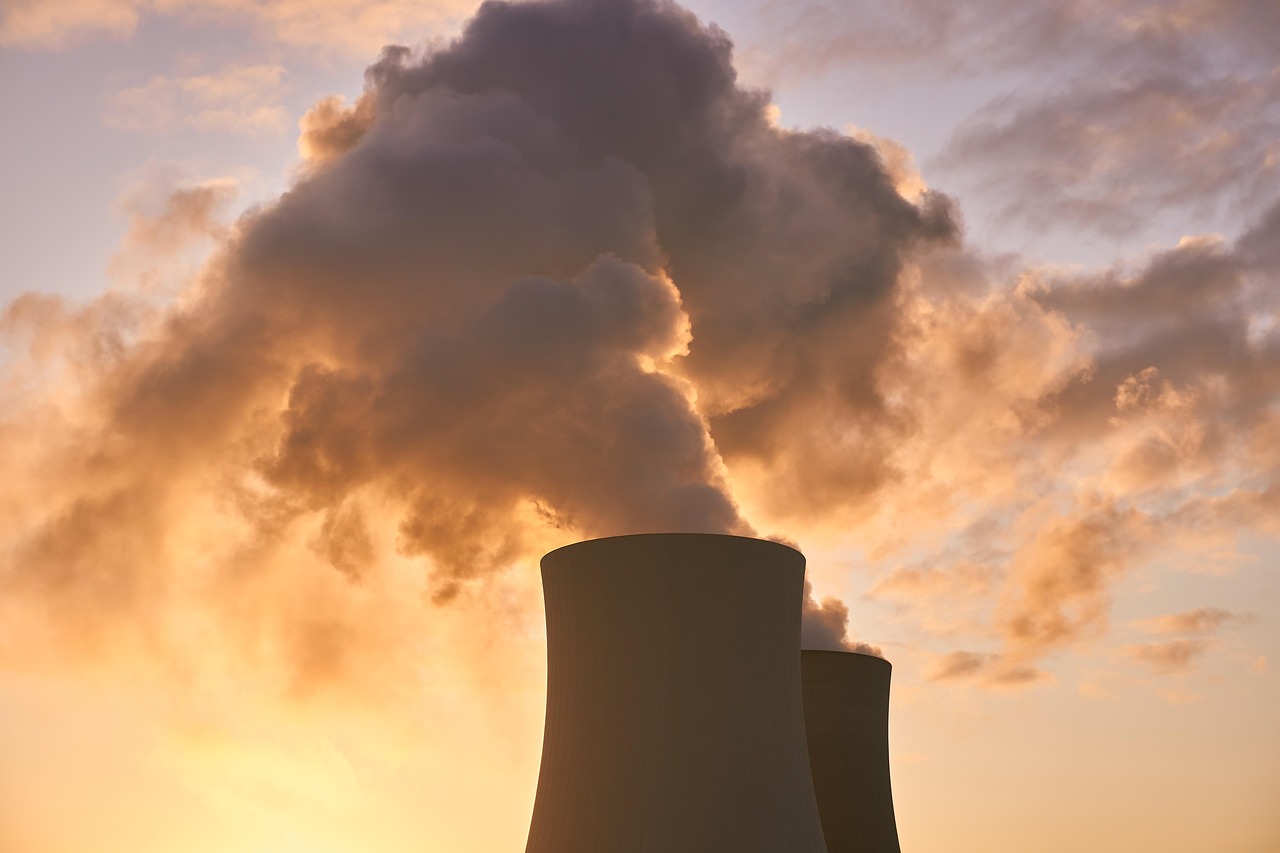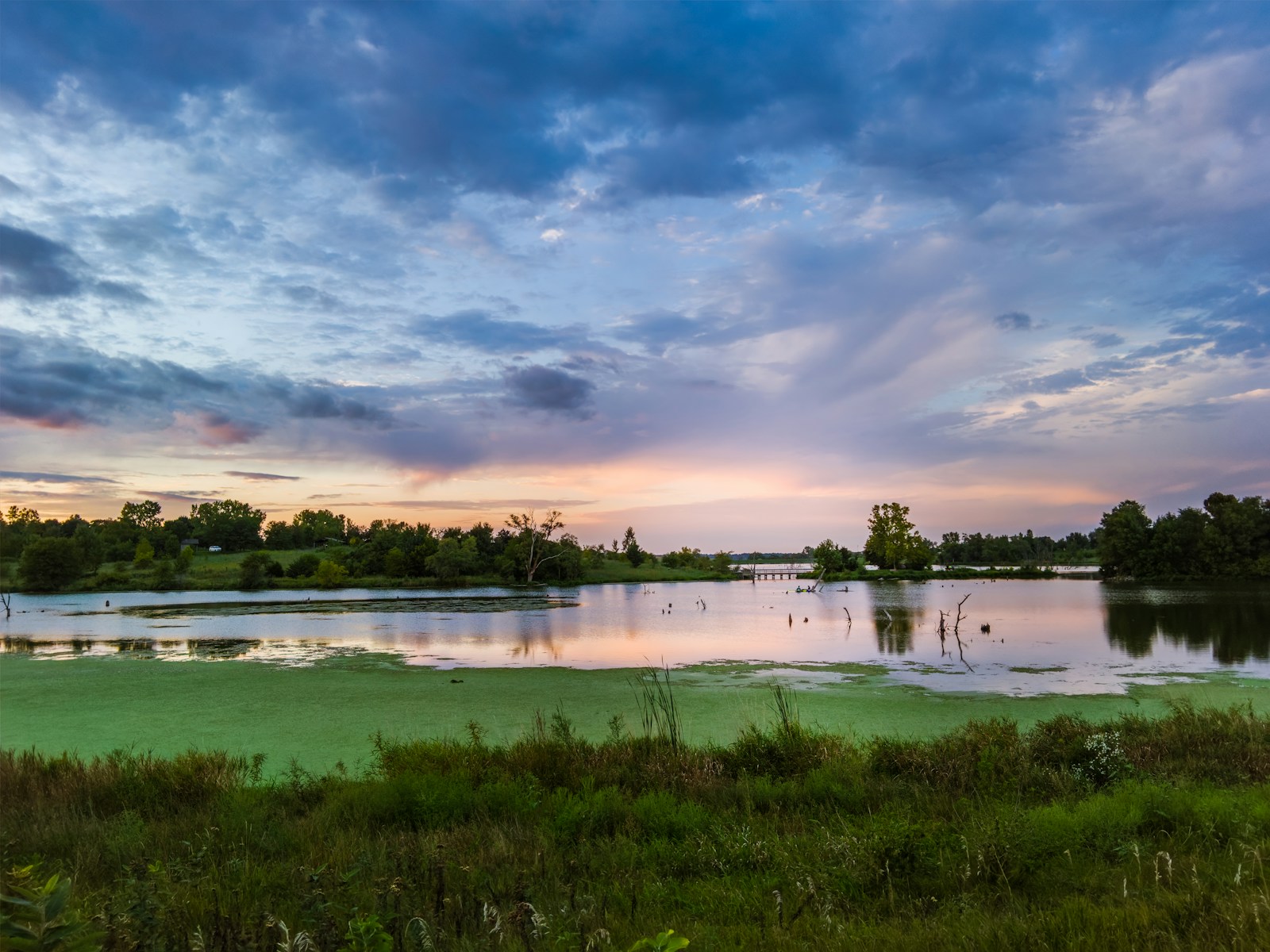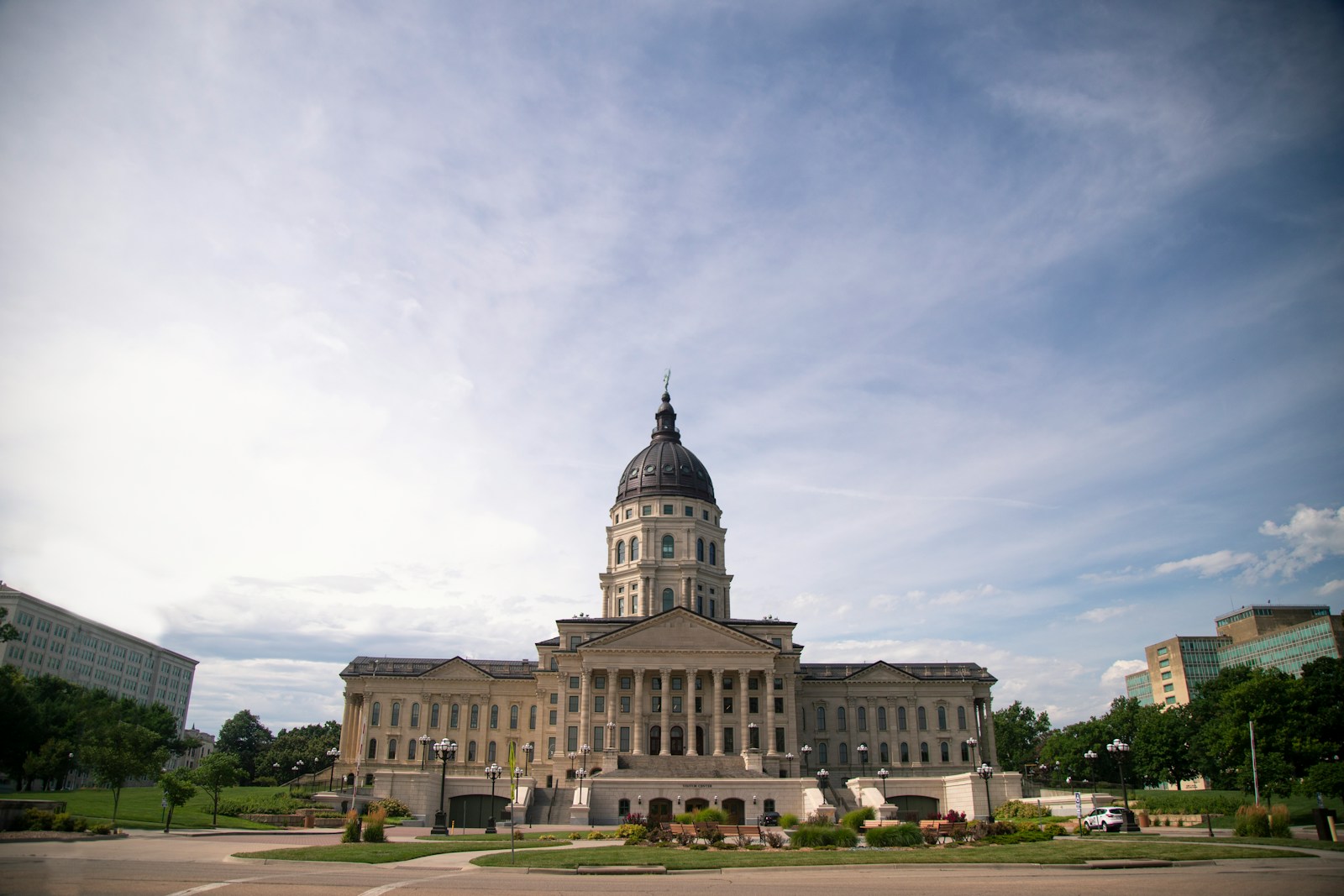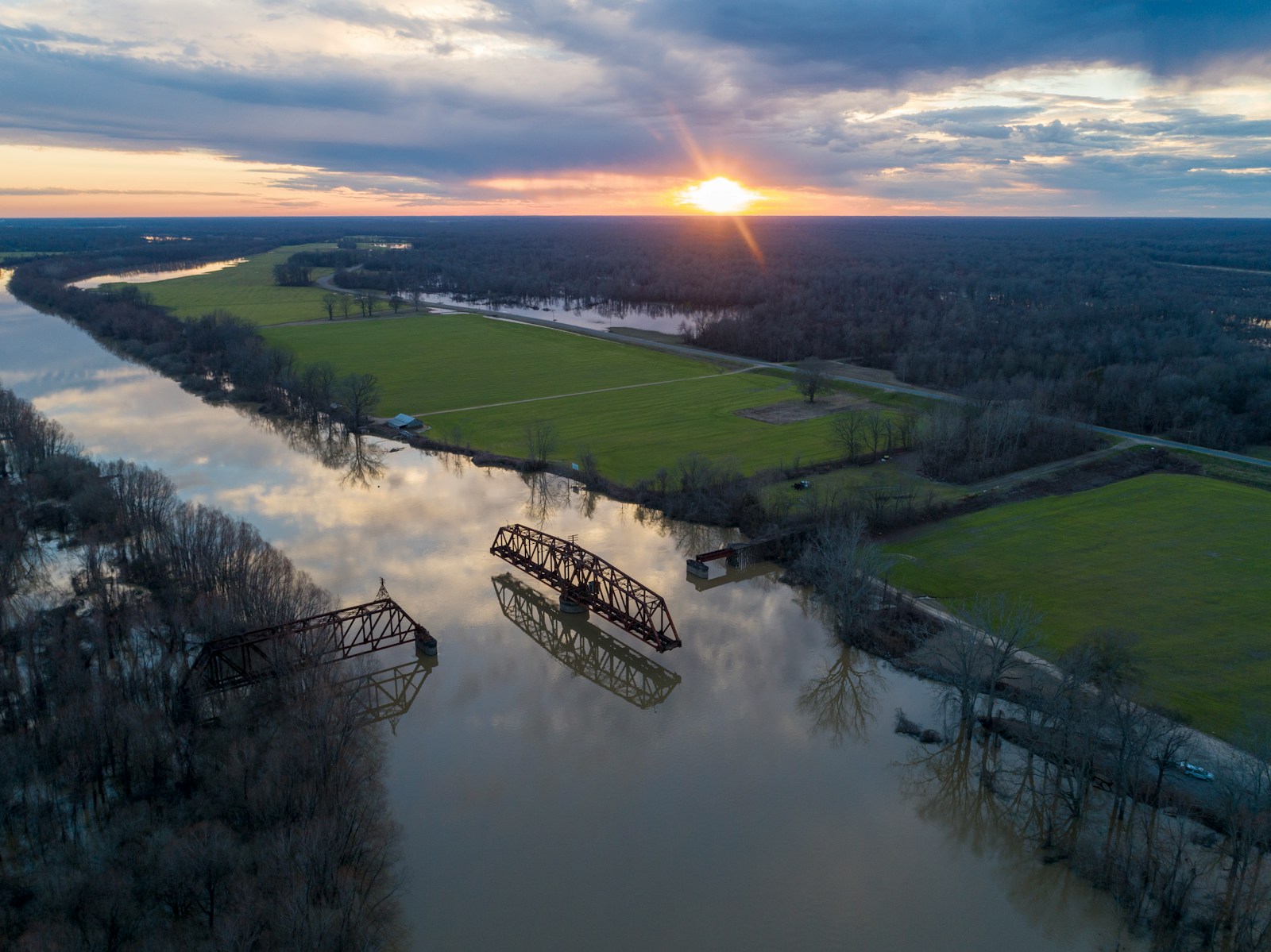These 28 States Produce the Most Nuclear Power
 https://climatecrisis247.com/wp-content/uploads/2025/06/4529392-150x150.jpg
https://climatecrisis247.com/wp-content/uploads/2025/06/4529392-150x150.jpgGlobal energy infrastructure will expand meaningfully in the coming years. Several key factors – including an ever-growing global population, expanding AI data centers, and continued economic development in much of the world – are expected to drive growing demand for energy in the coming decades. As a result, the world’s capacity to generate electricity is expected to rise by as much as 108% by 2050, according to the U.S. Energy Information Administration.
In light of the ongoing climate crisis, however, efforts to meet increased energy demand will also likely weigh environmental considerations. Data from the Environmental Protection Agency shows that the U.S. produced over 6.3 billion metric tons of greenhouse gas emissions in 2022, and the electric power sector alone accounted for 25% of those emissions. Air pollution generated by the U.S. energy sector is largely attributable to the national power grid’s reliance on fossil fuels, like natural gas and coal – two sources which, together, account for nearly 60% of all electricity production in the United States.
Continued reliance on fossil fuels to meet growing energy needs will result in greater carbon emissions, an outcome that will likely exacerbate the effects of climate change. As a result, clean energy sources are emerging as an increasingly attractive alternative – particularly nuclear power. Like wind and solar energy, nuclear energy does not generate harmful emissions. But unlike wind and solar, nuclear power is not intermittent, and is therefore more reliable. Nuclear power is also efficient, as, for example, a solar power plant requires 46 times as much land area as a nuclear facility to produce the same amount of energy, according to the International Atomic Energy Agency.
While high start-up costs and issues surrounding long-term nuclear waste management have generated no shortage of controversy around nuclear power, some policy makers appear increasingly likely to weigh the benefits of nuclear power over such concerns. In the early months of his second term, President Donald Trump signed a series of executive orders aimed at facilitating and incentivising new nuclear power plant construction. Additionally, the World Bank recently lifted a decades-old ban on financing nuclear energy projects.
Many of the largest companies in the United States have also shifted toward nuclear power. Tech industry giants, including Amazon, Meta, and Microsoft have all invested in nuclear technology to power AI and cloud services, while minimizing their corporate carbon footprint.
While nuclear energy has garnered renewed interest in recent months, the technology is nothing new. The first full-scale nuclear power plant became operational in Shippingport, Pennsylvania nearly 70 years ago. The Shippingport Atomic Power Station has since been decommissioned, but dozens of other nuclear plants have come online since the 1960s and remain operational today. These plants are spread across 28 states, and in many cases, account for a meaningful share of the state energy mix. Combined, these plants generated 18.2% of electricity nationwide in 2024.
Using data from the EIA, Climate Crisis 247 identified the states producing the most nuclear power. All 28 states with active nuclear power plants are ranked on the amount of nuclear power generated in 2024. All supplemental data in this story is also from the EIA.
Among the 28 states on this list, annual output from nuclear power plants ranges from 6.1 million to 99.2 million megawatt hours. In three states, nuclear facilities account for less than 10% of electricity production. But, in just as many states, nuclear plants account for over half of all energy production.
Editor's note: Due to a data processing error, a previous version of this story incorrectly noted the names of nuclear power plants operating in each state. This story has been updated with an accurate list of nuclear plants.
28. Nebraska

- Nuclear power generation in 2024: 6.1 million megawatt hours (0.8% of national nuclear power generation)
- Total, statewide power generation in 2024: 37.7 million megawatt hours (16.2% nuclear power)
- Nuclear power plants in state include: Cooper Nuclear Station
27. Kansas

- Nuclear power generation in 2024: 9.2 million megawatt hours (1.2% of national nuclear power generation)
- Total, statewide power generation in 2024: 58.5 million megawatt hours (15.7% nuclear power)
- Nuclear power plants in state include: Wolf Creek Generating Station
26. New Hampshire

- Nuclear power generation in 2024: 9.7 million megawatt hours (1.2% of national nuclear power generation)
- Total, statewide power generation in 2024: 17.3 million megawatt hours (55.9% nuclear power)
- Nuclear power plants in state include: Seabrook
25. Washington

- Nuclear power generation in 2024: 10.0 million megawatt hours (1.3% of national nuclear power generation)
- Total, statewide power generation in 2024: 101.5 million megawatt hours (9.8% nuclear power)
- Nuclear power plants in state include: Columbia Generating Station
24. Wisconsin

- Nuclear power generation in 2024: 10.1 million megawatt hours (1.3% of national nuclear power generation)
- Total, statewide power generation in 2024: 65.6 million megawatt hours (15.5% nuclear power)
- Nuclear power plants in state include: Point Beach Nuclear Plant
23. Missouri

- Nuclear power generation in 2024: 10.5 million megawatt hours (1.3% of national nuclear power generation)
- Total, statewide power generation in 2024: 67.9 million megawatt hours (15.5% nuclear power)
- Nuclear power plants in state include: Callaway
22. Mississippi

- Nuclear power generation in 2024: 10.7 million megawatt hours (1.4% of national nuclear power generation)
- Total, statewide power generation in 2024: 74.4 million megawatt hours (14.4% nuclear power)
- Nuclear power plants in state include: Grand Gulf
21. Minnesota

- Nuclear power generation in 2024: 11.8 million megawatt hours (1.5% of national nuclear power generation)
- Total, statewide power generation in 2024: 58.3 million megawatt hours (20.3% nuclear power)
- Nuclear power plants in state include: Monticello Nuclear Facility, Prairie Island
20. Louisiana

- Nuclear power generation in 2024: 14.7 million megawatt hours (1.9% of national nuclear power generation)
- Total, statewide power generation in 2024: 99.0 million megawatt hours (14.8% nuclear power)
- Nuclear power plants in state include: River Bend, Waterford 3
19. Arkansas

- Nuclear power generation in 2024: 14.8 million megawatt hours (1.9% of national nuclear power generation)
- Total, statewide power generation in 2024: 59.6 million megawatt hours (24.8% nuclear power)
- Nuclear power plants in state include: Arkansas Nuclear One
18. Maryland

- Nuclear power generation in 2024: 14.8 million megawatt hours (1.9% of national nuclear power generation)
- Total, statewide power generation in 2024: 35.8 million megawatt hours (41.2% nuclear power)
- Nuclear power plants in state include: Calvert Cliffs Nuclear Power Plant
17. Connecticut

- Nuclear power generation in 2024: 16.9 million megawatt hours (2.2% of national nuclear power generation)
- Total, statewide power generation in 2024: 45.2 million megawatt hours (37.4% nuclear power)
- Nuclear power plants in state include: Millstone
16. Ohio

- Nuclear power generation in 2024: 17.9 million megawatt hours (2.3% of national nuclear power generation)
- Total, statewide power generation in 2024: 142.9 million megawatt hours (12.6% nuclear power)
- Nuclear power plants in state include: Davis Besse, Perry
15. California

- Nuclear power generation in 2024: 18.4 million megawatt hours (2.4% of national nuclear power generation)
- Total, statewide power generation in 2024: 214.1 million megawatt hours (8.6% nuclear power)
- Nuclear power plants in state include: Diablo Canyon
14. Michigan

- Nuclear power generation in 2024: 26.3 million megawatt hours (3.4% of national nuclear power generation)
- Total, statewide power generation in 2024: 124.7 million megawatt hours (21.1% nuclear power)
- Nuclear power plants in state include: Donald C Cook
13. New York

- Nuclear power generation in 2024: 27.1 million megawatt hours (3.5% of national nuclear power generation)
- Total, statewide power generation in 2024: 131.7 million megawatt hours (20.6% nuclear power)
- Nuclear power plants in state include: James A Fitzpatrick, Nine Mile Point Nuclear Station, R E Ginna Nuclear Power Plant
12. New Jersey

- Nuclear power generation in 2024: 27.7 million megawatt hours (3.5% of national nuclear power generation)
- Total, statewide power generation in 2024: 61.2 million megawatt hours (45.2% nuclear power)
- Nuclear power plants in state include: PSEG Hope Creek Generating Station, PSEG Salem Generating Station
11. Virginia

- Nuclear power generation in 2024: 28.9 million megawatt hours (3.7% of national nuclear power generation)
- Total, statewide power generation in 2024: 101.9 million megawatt hours (28.4% nuclear power)
- Nuclear power plants in state include: North Anna, Surry
10. Florida

- Nuclear power generation in 2024: 29.1 million megawatt hours (3.7% of national nuclear power generation)
- Total, statewide power generation in 2024: 265.4 million megawatt hours (10.9% nuclear power)
- Nuclear power plants in state include: St Lucie, Turkey Point
9. Tennessee

- Nuclear power generation in 2024: 32.2 million megawatt hours (4.1% of national nuclear power generation)
- Total, statewide power generation in 2024: 75.4 million megawatt hours (42.7% nuclear power)
- Nuclear power plants in state include: Sequoyah, Watts Bar Nuclear Plant
8. Arizona

- Nuclear power generation in 2024: 32.4 million megawatt hours (4.1% of national nuclear power generation)
- Total, statewide power generation in 2024: 116.2 million megawatt hours (27.9% nuclear power)
- Nuclear power plants in state include: Palo Verde
7. Texas

- Nuclear power generation in 2024: 38.6 million megawatt hours (4.9% of national nuclear power generation)
- Total, statewide power generation in 2024: 563.8 million megawatt hours (6.8% nuclear power)
- Nuclear power plants in state include: Comanche Peak, South Texas Project
6. North Carolina

- Nuclear power generation in 2024: 43.3 million megawatt hours (5.5% of national nuclear power generation)
- Total, statewide power generation in 2024: 135.6 million megawatt hours (32.0% nuclear power)
- Nuclear power plants in state include: Harris, McGuire
5. Alabama

- Nuclear power generation in 2024: 44.5 million megawatt hours (5.7% of national nuclear power generation)
- Total, statewide power generation in 2024: 143.2 million megawatt hours (31.1% nuclear power)
- Nuclear power plants in state include: Browns Ferry, Joseph M Farley
4. Georgia

- Nuclear power generation in 2024: 48.0 million megawatt hours (6.1% of national nuclear power generation)
- Total, statewide power generation in 2024: 140.5 million megawatt hours (34.2% nuclear power)
- Nuclear power plants in state include: Edwin I Hatch
3. South Carolina

- Nuclear power generation in 2024: 53.8 million megawatt hours (6.9% of national nuclear power generation)
- Total, statewide power generation in 2024: 100.4 million megawatt hours (53.6% nuclear power)
- Nuclear power plants in state include: Catawba, H B Robinson, Oconee, V C Summer
2. Pennsylvania

- Nuclear power generation in 2024: 75.4 million megawatt hours (9.6% of national nuclear power generation)
- Total, statewide power generation in 2024: 243.6 million megawatt hours (31.0% nuclear power)
- Nuclear power plants in state include: Beaver Valley, Limerick, Peach Bottom, TalenEnergy Susquehanna
1. Illinois

- Nuclear power generation in 2024: 99.2 million megawatt hours (12.7% of national nuclear power generation)
- Total, statewide power generation in 2024: 186.1 million megawatt hours (53.3% nuclear power)
- Nuclear power plants in state include: Braidwood Generation Station, Byron Generating Station, Clinton Power Station, Dresden Generating Station, LaSalle Generating Station, Quad Cities Generating Station
More from ClimateCrisis 247
- 11 US Cities Where Summer Temperatures Have Surged in the Last 50 Years
- 13 US Counties That Suffered Historic Heat Last Month
- States Where the Government is Underestimating Flood Risk
- American Cities Where Summer Temperatures Are Projected to Surge
